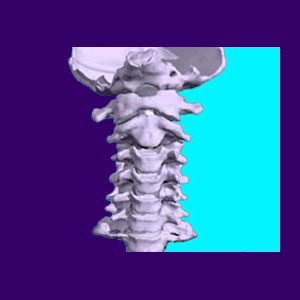
Arthritis neck pain is the second most commonly diagnosed source of cervical symptoms, bested only by herniated discs. Arthritis is a normal and expected part of the aging process and the cervical spine is one of the locations where arthritis tends to be the most visible. Although many arthritic processes work on the spinal structures, there are a few which are most often implicated in sourcing symptoms in the neck, shoulder, arms, hands and fingers.
The scope of this article will explore arthritic activity in the neck and how it may cause pain is some patients. Additionally, the article will also explain why many neck pain syndromes are mistakenly linked to normal and universal spinal degeneration which is caused by osteoarthritis.
Arthritis Neck Pain Problems
Arthritis in the spine is most commonly blamed for causing pain due to several distinct processes. The type of arthritic process diagnosed will determine the variety of treatment which may be needed, if any.
Foraminal stenosis can cause pinched nerves when osteophytes build up around the neuroforamen, occasionally compressing the nerve root as it tries to leave the spinal column. This diagnosis is speculative in many instances and often turns out to be incorrect, despite the actual existence of the bone spurs. I see a great number of cases where the symptoms expressed do not correlate to the implicated nerve in any way, yet the diagnosis is accepted nonetheless.
Arthritis is also a major cause of central spinal stenosis, especially in elderly patients. This process is normal, expected and generally asymptomatic, although it can induce serious pain and neurological difficulties in rare instances. In these cases, the arthritic activity narrows the spinal canal to symptomatic degrees and compresses the spinal cord.
Another typical osteoarthritis-related diagnosis is facet joint syndrome. This is a mechanical back ache diagnosis involving arthritic activity inside the small facet joints which link vertebrae to one another. Pain is usually enacted upon movement.
It should be noted that there are no conservative noninvasive treatments which can resolve any of these conditions. This is strange, since the majority of all arthritic treatment is indeed nonsurgical in nature. If you consider the profitability of blaming pain on arthritis and then treating it conservatively over a long timeline, the whole puzzling scenario makes far more sense. Think economic motivation and you will understand.
Truths About Neck Pain from Arthritis
Osteoarthritis is normal in the spine. The older we get, the greater the degree of arthritic change. However, the majority of pain blamed on arthritis occurs in patients aged 40 to 55. This is certainly not the demographic which suffers the greatest arthritic degeneration.
This fact supports the theory of common misdiagnosis of the various arthritic processes as the actual sources of pain in most instances. In patients where the diagnosis of foraminal or spinal stenosis is correct, treatment may be required, and occasionally, the case may even need surgical intervention in order to fully resolve. However, these circumstances are rare and represent the minority of patients diagnosed with arthritic back or neck pain.
Instead, most patients have severe regional pain over large areas of the back which are blamed on typically tiny pockets of localized arthritic activity. In most of these circumstances, the diagnosis is illogical from a scientific viewpoint, but few patients question the validity of anything they are told by physicians anyway. No wonder iatrogenesis is such as huge problem in modern medicine.
Arthritis Neck Pain Help
Spinal arthritis is generally nothing to fear. In some cases, a particular osteophyte may cause trouble, but even these issues often resolve on their own or with targeted care.
Facet joint syndrome is a very controversial diagnosis, since the condition should enact mechanical back pain, but in many cases, is blamed for causing widespread arthritis neck pain and neurological concerns, which is basically nonsensical.
Minor foraminal stenosis and spinal stenosis can be shown on diagnostic imaging, such as spinal MRI, but typically also serve as little more than back pain scapegoats.
Be very careful pursuing treatment for suspected arthritis-based diagnoses, since many turn out to be incorrect and can lead the patient into surgery when no treatment may be required at all.




